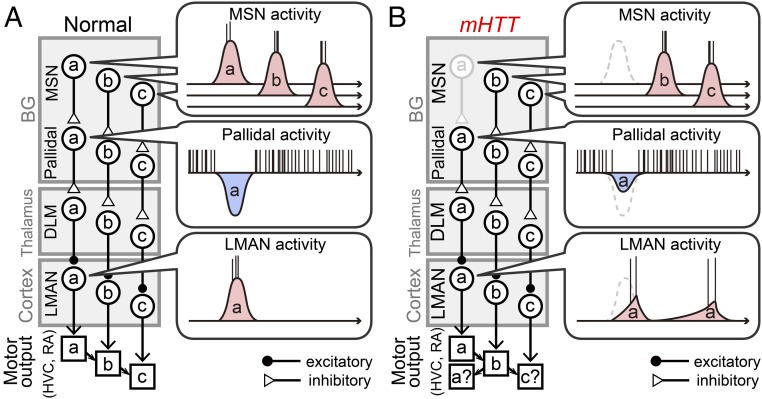Fig. 7.
Model of how MSN loss can acutely disrupt motor sequences. A simplified schematic depicts a cortico-BG module that conveys information about a motor sequence in a normal bird (A) and mHTT bird (B). In a normal bird, each MSN fires a short burst of action potentials that is hypothesized to encode information about a specific vocal motor gesture (a, b, or c) that is conveyed to pallidal, DLM, and LMAN neurons. In the mHTT bird, loss of the MSN that encodes a (gray) reduces the inhibitory modulation of related pallidal neuron activity, which subsequently disrupts the temporal pattern of the associated LMAN neuron’s activity. The mistimed signals of the LMAN neuron may disturb the motor signals in the downstream song premotor region HVC, or possibly through RA (Discussion), promoting an insertion of motor output a at a wrong time when these pathways are about to induce motor output of c, disrupting the normal pattern of syllable sequences. Note that this model does not necessarily disrupt the spectral features of syllable a by LMAN activity and can be compatible with the unaltered trial-to-trial correlation of LMAN activity in mHTT birds (Fig. 5), which may account for the retained trial-to-trial variability of syllable a regardless of the reduced burst firing.

